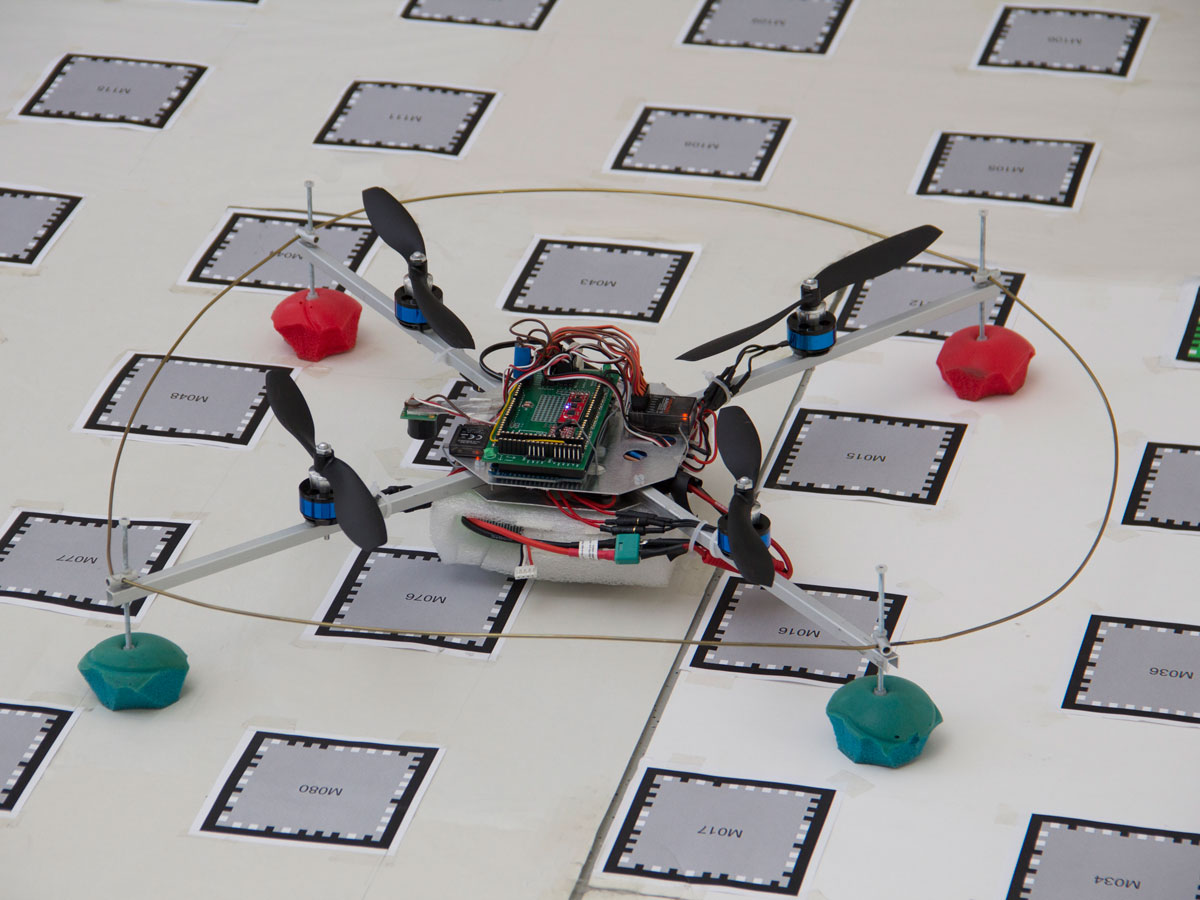An autonomous quadcopter piloted by a smartphone
August 20, 2013

Autonomous quadcopter (credit: TU Vienna)
A completely autonomous quadcopter has been designed at the Vienna University of Technology, with computing power and imaging provided by a smartphone.
The smartphone camera provides the visual data and its processor acts as the control center. And the navigation intelligence was coded in a smartphone app. A microcontroller adjusts the rotor speed, so that the quadcopter flies as steadily as possible.
The quadcopter was designed to work indoors, even in small rooms. This is a major challenge; especially close to walls or corners, aerodynamics can be much more tricky than in open space.
To test the quadcopters navigational capabilities, the team attached visual codes to the floor, similar to QR-codes. Hovering above these codes, the quadcopter recognizes them, obtains information and creates a map of its environment. Once it has created a virtual map of the codes on the floor, it can head for a specific known location or go on exploring areas it has not yet checked out.
“In the future, the quadcopter should also be able to do without these codes. Instead, we want it to use naturally occurring reference points, which can be obtained from the camera data and also from depth sensors such as the MS Kinect,” says Annette Mossel, chief engineer of the quadcopter project.
Among the possible applications: firemen could send it into a burning building and have it transmit a 3D picture from inside before they enter the building themselves. Miniature quadcopters could guide people to the right place in large, labyrinthine buildings. And because of its low price, the smartphone-quadcopter could also be used in less wealthy regions of the world — for instance to monitor illegal forest clearance without having to use expensive helicopters.
The components of the quadcopter cost less than a thousand Euros, says the team.